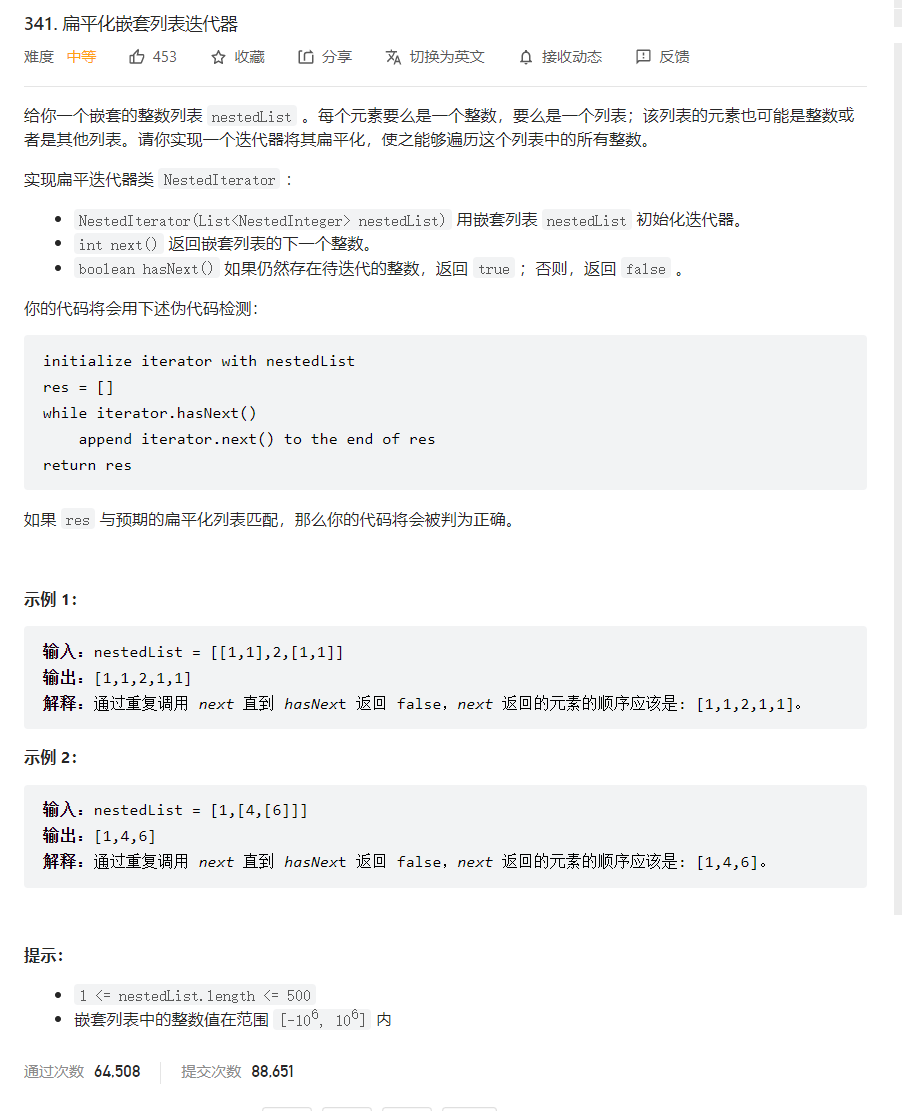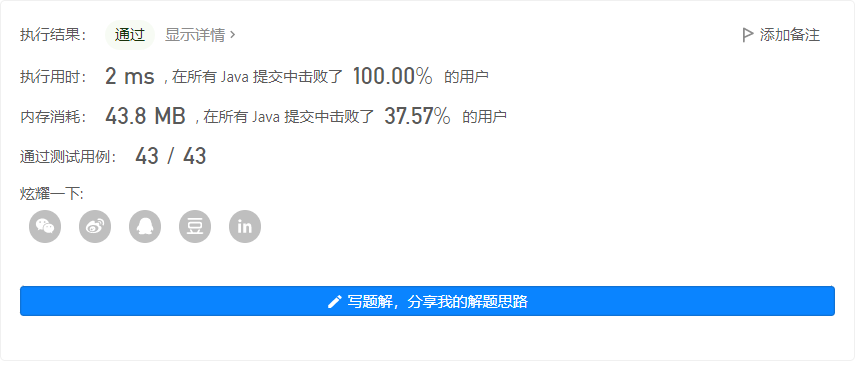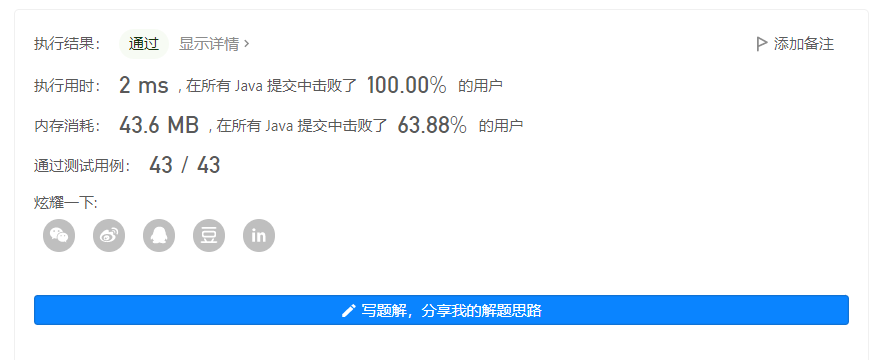🌕🌗 341. 扁平化嵌套列表迭代器
2022年10月10日
- algorithm
🌕🌗 341. 扁平化嵌套列表迭代器
难度: 🌕🌗
问题描述

解法 1 - 递归
/**
* // This is the interface that allows for creating nested lists.
* // You should not implement it, or speculate about its implementation
* public interface NestedInteger {
*
* // @return true if this NestedInteger holds a single integer, rather than a nested list.
* public boolean isInteger();
*
* // @return the single integer that this NestedInteger holds, if it holds a single integer
* // Return null if this NestedInteger holds a nested list
* public Integer getInteger();
*
* // @return the nested list that this NestedInteger holds, if it holds a nested list
* // Return empty list if this NestedInteger holds a single integer
* public List<NestedInteger> getList();
* }
*/
public class NestedIterator implements Iterator<Integer> {
// 思路:
// 可以看出是嵌套的 链表 | 整数 的数据结构
// 最直接的方法就是,一次把所有整数元素均得出,放入一个集合中,然后依次取出
// 嵌套 结构中取元素相当于 递归 - 深度优先遍历
LinkedList<Integer> list;
public NestedIterator(List<NestedInteger> nestedList) {
this.list = new LinkedList<>();
// 初始化 list
init(nestedList);
}
private void init(List<NestedInteger> nestedList) {
for(NestedInteger cur: nestedList) {
if(cur.isInteger()) {
list.addLast(cur.getInteger());
} else {
// 递归
init(cur.getList());
}
}
}
@Override
public Integer next() {
// 返回数组中最后一个元素,同时删除最后一个元素
Integer res = list.removeFirst();
return res;
}
@Override
public boolean hasNext() {
return !list.isEmpty();
}
}
/**
* Your NestedIterator object will be instantiated and called as such:
* NestedIterator i = new NestedIterator(nestedList);
* while (i.hasNext()) v[f()] = i.next();
*/
输出 1

解法 2 - 借助栈
/**
* // This is the interface that allows for creating nested lists.
* // You should not implement it, or speculate about its implementation
* public interface NestedInteger {
*
* // @return true if this NestedInteger holds a single integer, rather than a nested list.
* public boolean isInteger();
*
* // @return the single integer that this NestedInteger holds, if it holds a single integer
* // Return null if this NestedInteger holds a nested list
* public Integer getInteger();
*
* // @return the nested list that this NestedInteger holds, if it holds a nested list
* // Return empty list if this NestedInteger holds a single integer
* public List<NestedInteger> getList();
* }
*/
public class NestedIterator implements Iterator<Integer> {
// 思路:
// 之前的做法是,一次性把所有元素放入集合中,若元素过多可能出现内存放不下的情况,因此理论上应该是惰性处理的思路
// 只有在想要求下一个元素时,才处理一小部分元素
// 借助 辅助栈 实现
// 每次只取出队头元素,如果是整数,直接取出,如果是集合,则进行拆分,直到能够取出整数
LinkedList<NestedInteger> stack;
public NestedIterator(List<NestedInteger> nestedList) {
this.stack = new LinkedList<>(nestedList);
}
@Override
public Integer next() {
return stack.pollFirst().getInteger();
}
@Override
public boolean hasNext() {
if(stack.isEmpty()) {
return false;
}
if(stack.peekFirst().isInteger()) {
return true;
}
// 队头为集合,需要拆分,查看分解后是否存在整数
while(!stack.isEmpty() && !stack.peekFirst().isInteger()) {
List<NestedInteger> cur = stack.pollFirst().getList(); // 获取队头的集合
// 将集合元素依次压栈放入队头
int len = cur.size();
for(int i = len - 1; i >= 0; i --) {
stack.addFirst(cur.get(i));
}
}
return !stack.isEmpty();
}
}
/**
* Your NestedIterator object will be instantiated and called as such:
* NestedIterator i = new NestedIterator(nestedList);
* while (i.hasNext()) v[f()] = i.next();
*/
输出 2
